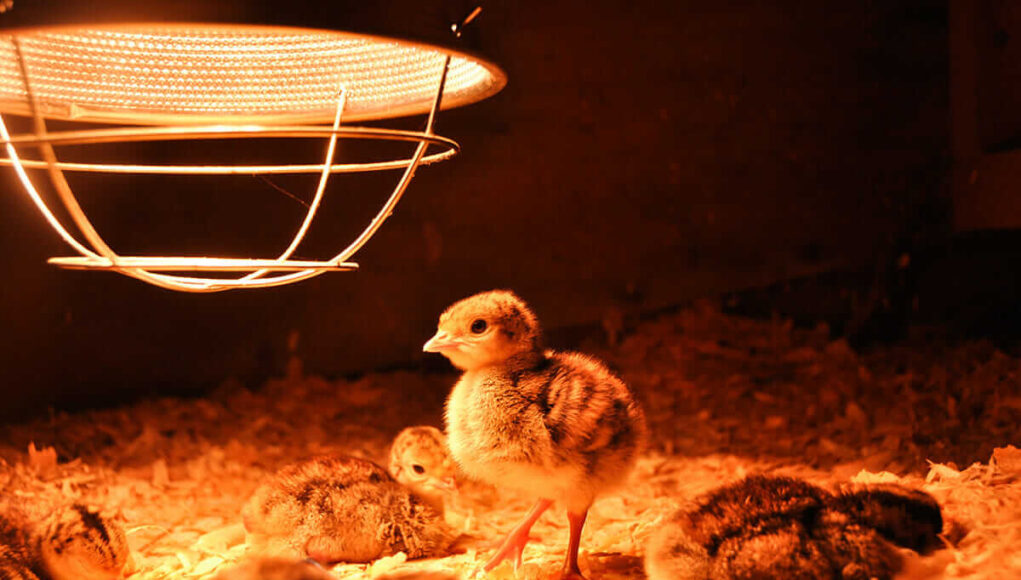Raising healthy chicks is a rewarding endeavor, and understanding when to introduce grit in brooder is a key part of this process. This article will guide you in determining the right time to include grit in your chicks’ diet, ensuring they grow strong and healthy.

Understanding the Role of Grit in a Chick’s Diet
Before we delve into when to introduce grit in brooder, it’s crucial to understand what grit is and why it’s important. Grit comprises small, hard particles like sand or crushed stone that chicks use in their gizzards to grind down food, aiding in digestion. Without grit, chicks may have difficulty processing their food, which can lead to nutritional deficiencies.
Why Timing Matters for Grit Introduction
The timing of introducing grit is essential because it aligns with the chicks’ dietary changes. As chicks transition from starter feed to more complex foods, the need for grit increases. Introducing grit too early or too late can have adverse effects on their health.
Chick Starter Feed and Its Role
Chick starter feed is specially formulated to meet the nutritional needs of young chicks. This feed is easy to digest and does not require grit for digestion. However, as chicks grow and begin to eat other foods, grit becomes necessary.
When Should You Start Introducing Grit?
Typically, you can start introducing grit to chicks between 2 to 3 weeks of age. At this stage, they might begin to peck at other food items. Introducing grit at this time helps prepare their digestive systems for more varied diets.
Signs Your Chicks Are Ready for Grit
Watch for these signs that your chicks are ready for grit:
- Increased pecking at non-food items
- Interest in foods other than starter feed
- Growing size and appetite
How to Introduce Grit in the Brooder
Introducing grit into the brooder should be done gradually. You can start by sprinkling a small amount into the feed or providing it in a separate dish. Ensure the grit is appropriate for the chicks’ age, usually labeled as ‘chick grit.’
Frequency and Quantity
Offer grit in moderation, as excessive grit can lead to digestive issues. Typically, a small handful of grit per 10 chicks is sufficient. Replenish as needed, observing how much the chicks consume.
Monitoring Your Chicks’ Health and Behavior
After introducing grit, monitor your chicks for any changes in behavior or health. Healthy chicks will show increased activity, regular feed consumption, and proper growth. If you notice any adverse effects, consult a poultry expert.
Common Digestive Issues
Be aware of potential digestive problems, such as impacted gizzard, which can occur if chicks consume excessive grit. Regularly check their droppings and overall behavior to ensure they’re healthy.
Additional Tips for Brooder Management
Managing a brooder involves more than just introducing grit. Consider these additional tips to ensure optimal conditions:
- Keep feed dry with tips from keeping feed dry.
- Provide safe toys to stimulate their minds.
- Change bedding regularly by following guidelines on changing brooder bedding.
Consider Eco-friendly Options
Explore sustainable practices like using eco-friendly brooders and paper towels for bedding.
Conclusion
Understanding when to introduce grit in brooder is crucial for raising healthy chicks. By observing their behavior and dietary needs, you can introduce grit at the right time, ensuring their digestive systems develop properly. With careful management and monitoring, your chicks will thrive, leading to a successful and rewarding poultry-raising experience.
External Resources
For more information on caring for baby chicks, visit Purina Mills.

FAQs
1. Can chicks eat too much grit?
Yes, excessive grit can cause digestive issues like an impacted gizzard. Provide grit in moderation and monitor your chicks’ health.
2. What type of grit is suitable for chicks?
Chick grit, which is smaller and softer than adult grit, is ideal for young chicks.
3. How often should I offer grit to my chicks?
Provide grit as needed, typically a small handful per 10 chicks. Monitor their consumption and adjust accordingly.
This article contains affiliate links. We may earn a commission at no extra cost to you.











